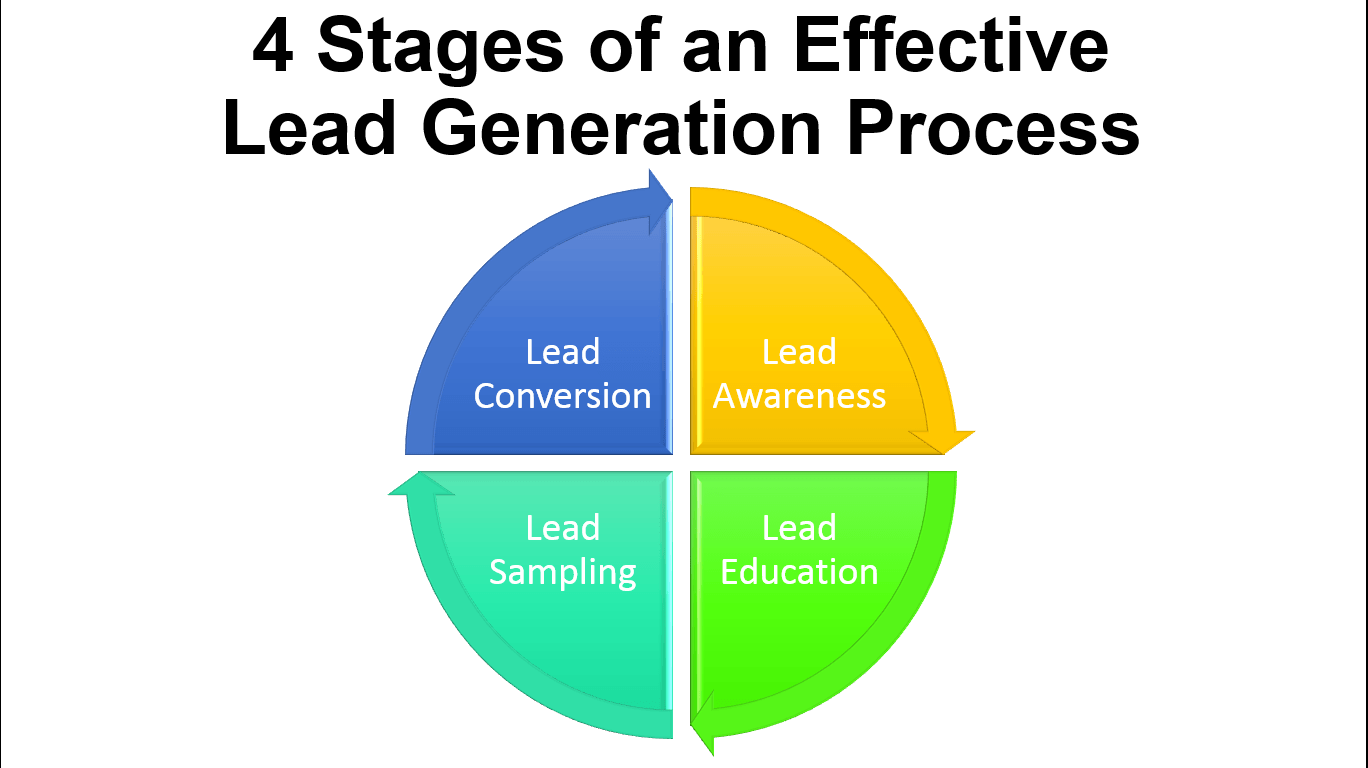4 Stages of an Effective Lead Generation Process
Generating and converting leads is mostly what marketing is about.
In this pursuit, marketers have long realized there is a definite lead generation process that must occur in most businesses in order to get a prospect’s interest and then turn that interest into dollars.

Many businesses have differing lead generation processes depending upon the complexity or cost of the purchase being considered. Some have processes that are triggered by events, such as the birth of a child or start of a business.
The lead generation process, like most every other aspect of marketing, has been impacted dramatically by the Internet, access to abundant content and information and a prospect’s ability to block uninvited messages. So much so that everyone's asking, "what is lead generation process?"
The four stages of the lead generation process acknowledges the fact that your job as a small business owner, CEO, or marketer is to get involved in moving someone from awareness to conversion and at each of these stages of lead generation, address a prospect’s evolving relationship with your organization.
So, your stages of lead generation might look something like this today:
#1. Lead Awareness
This stage is all about how leads become aware of a organization and its offerings. The key activities in the lead awareness stage include networking, public relations, advertising, and content. These core marketing tactics are some of the best ways to get leads to become aware of you. Also, in many businesses a referral or search result is the first exposure that someone gains to an organization.
#2. Lead Education
Once lead awareness is created you must build trust for your products, services, solutions and expertise. Case studies, testimonials, project history, an consistent newsletter, event or seminar can be a tremendous tool for lead education as it allows you to demonstrate expertise, knowledge, resources, and experience over time. Lead education offerings that teach is what's important here. When you develop a lead generation process for teaching people, then you get invited to places where you have the opportunity to sell.
#3. Lead Sampling
Today’s shift in lead generation now incorporates lead sampling. Prospects want to be able to sample your expertise, product or service and it’s the easiest way to move people to lead conversion, particularly in highly competitive and highly priced situations. Continuing to build trust through demos, audits, trail offers, samples, assessments, etc. is such an essential element of buying. Really this is an "tryout" and it’s where you need to deliver more than anyone could possibly consider doing.
#4. Lead Conversion
Lead conversion, or what most businesses still refer to as selling, is a profoundly changed activity in this process. If the lead generation process described above has been followed to this point, there is very little selling that remains. The job here is to make sure the prospect can see how they can get the desired results with your solution. This is still an education and content play, but now it’s all about showing proof and forecasting results in your process.
Every time you enter a new market or develop new product or service you can use this framework as a way to make sure you create the perfect end to end lead generation process for every offering.
Contact your marketing consultant at Indispensable Marketing
If you’re a small service based business that needs help with developing a effective lead generation process or your business’s online presence on Google and other search engines, at Indispensable Marketing we can help. We offer marketing strategy consulting, marketing audits, monthly marketing packages, consultations, exploratory calls or monthly local SEO services. Contact us for more information.




